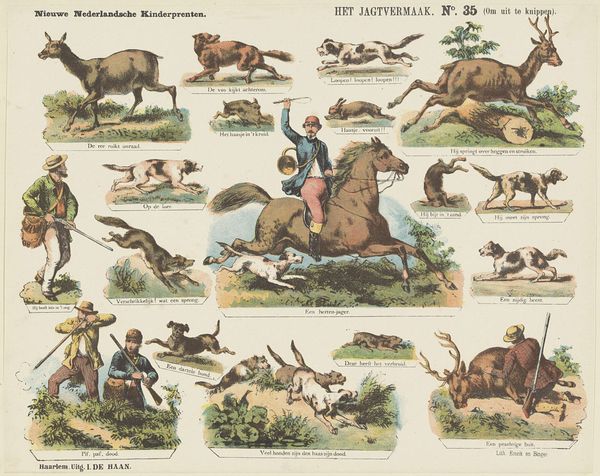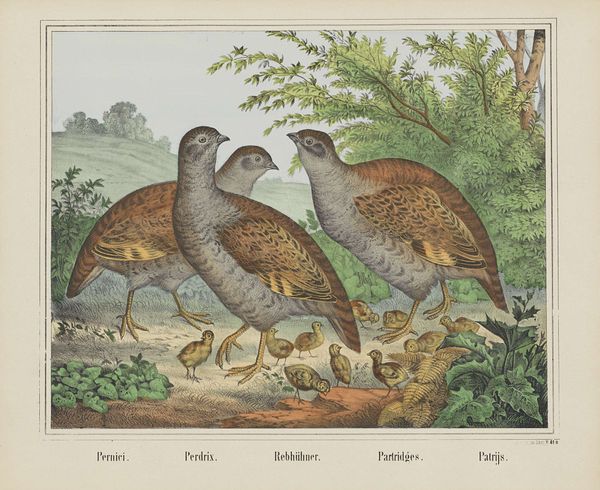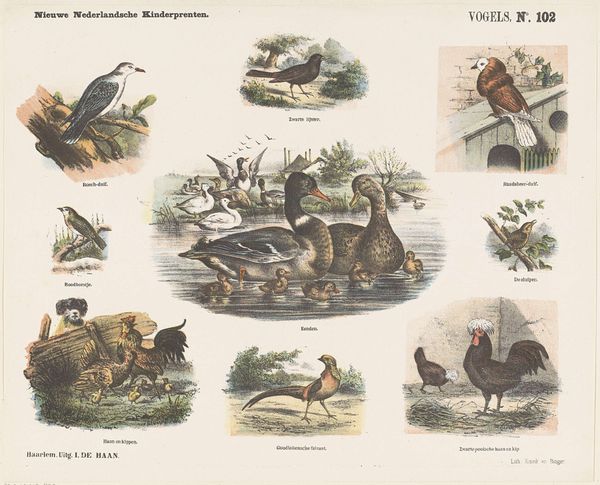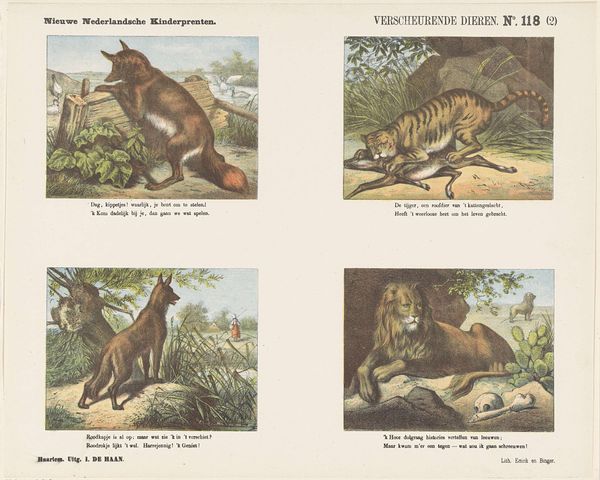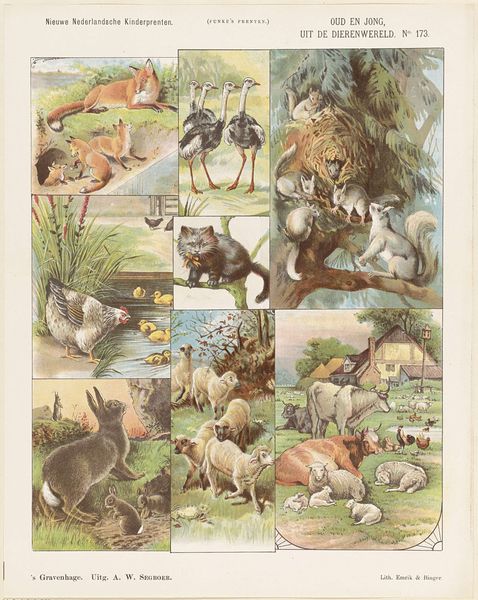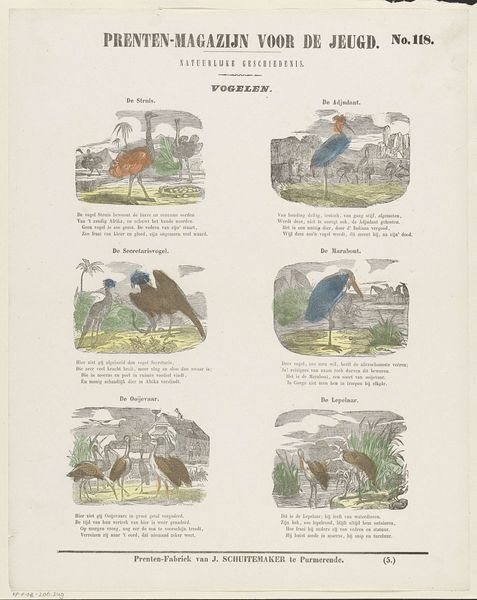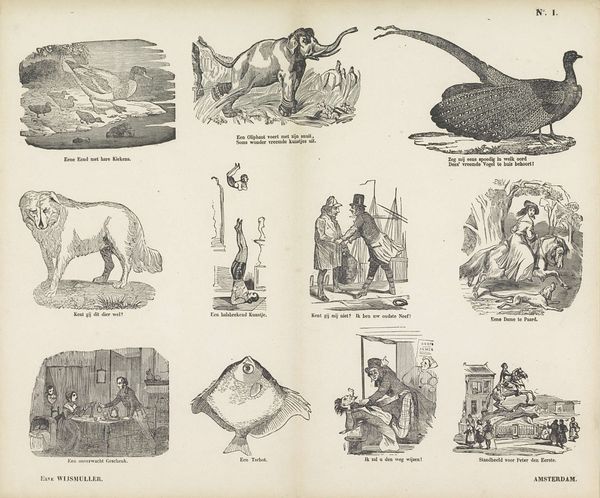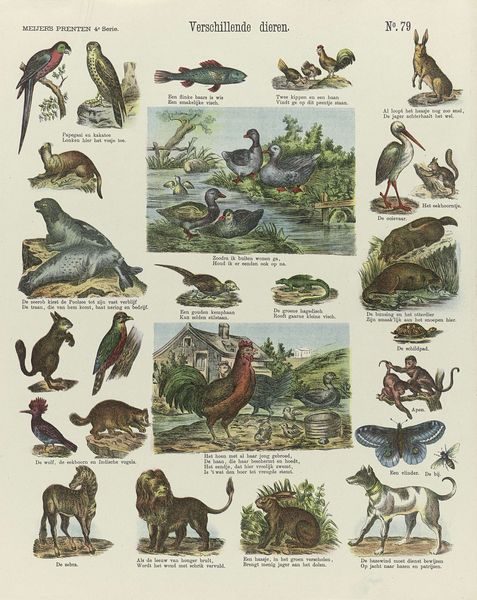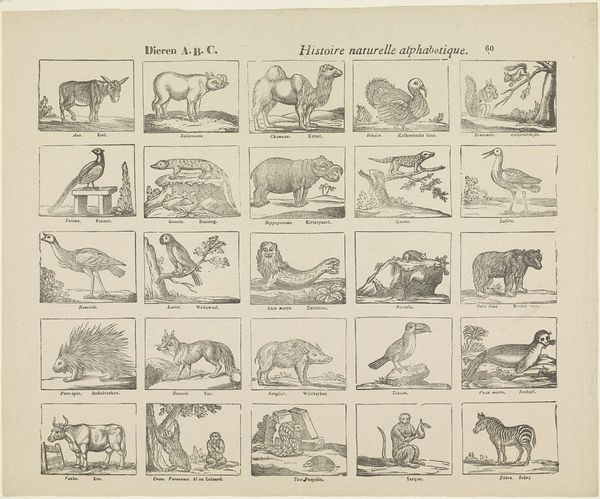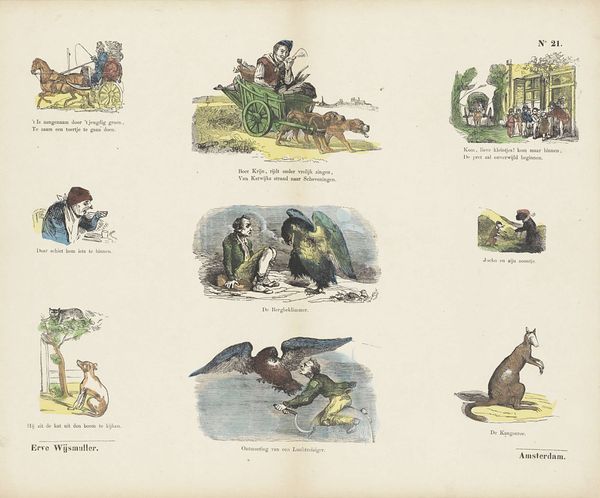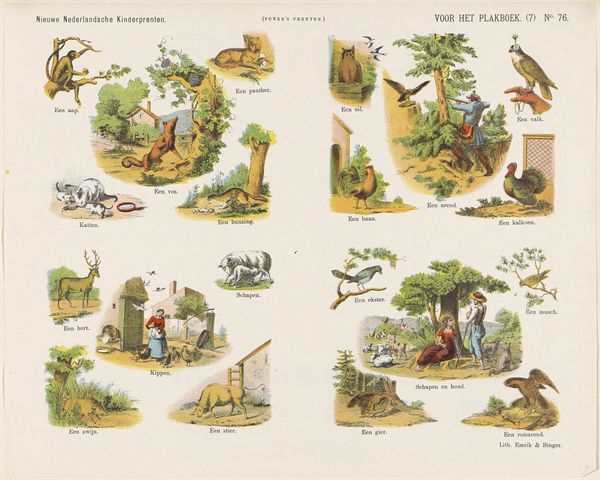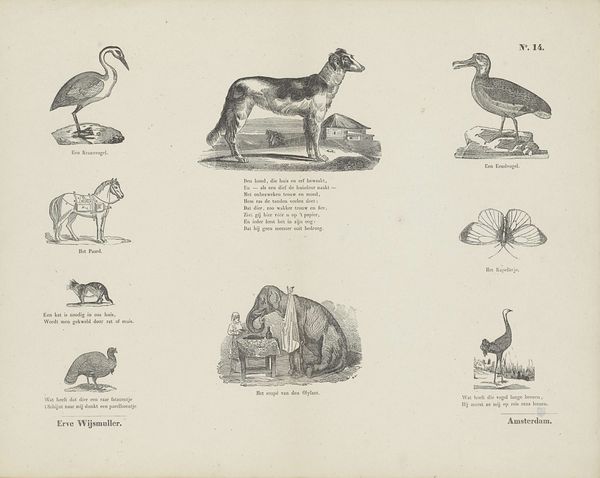
print, watercolor
# print
#
landscape
#
bird
#
watercolor
#
watercolour illustration
#
genre-painting
#
realism
Dimensions: height 343 mm, width 424 mm
Copyright: Rijks Museum: Open Domain
Editor: So, this delightful print, "Steltvogels. roofvogels. zangvogels," or "Wading Birds, Birds of Prey, Songbirds," dates back to somewhere between 1875 and 1903, by Jan de Haan. It's a watercolor print featuring, well, a lot of birds! It strikes me as almost encyclopedic, like a page ripped from a fantastical naturalist's notebook. What catches your eye when you look at it? Curator: It is a busy little ecosystem isn't it! Immediately, I'm drawn to the central framing device: these groupings of birds held within distinct pictorial spaces. We see realms colliding. Is it the intention to flatten hierarchies between species, between these separate landscapes, perhaps between what is seen as 'native' versus 'exotic' through this collage? What is revealed or obscured by these distinctions of presentation? Do you see a symbolic order being implied with this pictorial method? Editor: That's fascinating. I hadn't considered the potential symbolism of the framing itself. The arrangement does feel quite deliberate now that you mention it. The central ostrich seems to command the most space. It makes me wonder if there's a commentary here about humankind's attempts to categorize and contain nature. Curator: Precisely! It whispers of the era's fascination with taxonomy, this mania for ordering the world and claiming dominion, even aesthetically. Do you notice how the birds, even though varied, share a certain…stiffness? Perhaps that hints at a human desire to fix nature, to make it still and knowable. Does the almost aggressive amount of data - this illustrated inventory - diminish the wild nature it proposes to capture? Editor: I can see that now. I was so focused on the charm of the individual birds that I missed the bigger picture about control. It also now feels more aligned with educational tools of the period too, didactic rather than immersive, an approach rather specific to this cultural moment. Curator: Exactly. It's about a relationship of domination. Perhaps even offering a melancholy elegy for the diminishing of wilderness with industrial advances of the nineteenth century. Editor: Wow, I'll definitely be spending more time thinking about what seems like a superficially sweet scene!
Comments
No comments
Be the first to comment and join the conversation on the ultimate creative platform.
